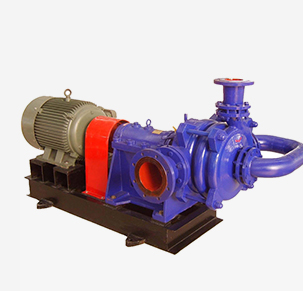Romanian
- Afrikaans
- Albanian
- Amharic
- Arabic
- Armenian
- Azerbaijani
- Basque
- Belarusian
- Bengali
- Bosnian
- Bulgarian
- Catalan
- Cebuano
- Corsican
- Croatian
- Czech
- Danish
- Dutch
- English
- Esperanto
- Estonian
- Finnish
- French
- Frisian
- Galician
- Georgian
- German
- Greek
- Gujarati
- Haitian Creole
- hausa
- hawaiian
- Hebrew
- Hindi
- Miao
- Hungarian
- Icelandic
- igbo
- Indonesian
- irish
- Italian
- Japanese
- Javanese
- Kannada
- kazakh
- Khmer
- Rwandese
- Korean
- Kurdish
- Kyrgyz
- Lao
- Latin
- Latvian
- Lithuanian
- Luxembourgish
- Macedonian
- Malgashi
- Malay
- Malayalam
- Maltese
- Maori
- Marathi
- Mongolian
- Myanmar
- Nepali
- Norwegian
- Norwegian
- Occitan
- Pashto
- Persian
- Polish
- Portuguese
- Punjabi
- Romanian
- Russian
- Samoan
- Scottish Gaelic
- Serbian
- Sesotho
- Shona
- Sindhi
- Sinhala
- Slovak
- Slovenian
- Somali
- Spanish
- Sundanese
- Swahili
- Swedish
- Tagalog
- Tajik
- Tamil
- Tatar
- Telugu
- Thai
- Turkish
- Turkmen
- Ukrainian
- Urdu
- Uighur
- Uzbek
- Vietnamese
- Welsh
- Bantu
- Yiddish
- Yoruba
- Zulu
Telephone: +86 13120555503
Email: frank@cypump.com
dec. . 27, 2024 10:38 Back to list
similar topic seals for slurry pumps - all you need to know
Seals for Slurry Pumps Everything You Need to Know
When it comes to handling abrasive and viscous mixtures, slurry pumps are indispensable in industries such as mining, wastewater treatment, and chemical processing. A critical component in the optimal performance and longevity of these pumps is the sealing system. Understanding the types, functions, and importance of seals for slurry pumps can help in maintenance and operational efficiency.
Importance of Seals in Slurry Pumps
Slurry pumps are designed to transport mixtures containing solid particles and liquids. The harsh environment these pumps operate in demands seals that can withstand high abrasion, temperature variations, and corrosive media. The primary function of seals is to prevent the leakage of hazardous or costly materials while protecting the internal components of the pump from abrasive particles.
The failure of seals can lead to significant downtime, increased operational costs, and potential safety hazards. Therefore, selecting the right seal is crucial to ensure reliable pump operation and minimize maintenance interventions.
Types of Seals
1. Mechanical Seals Mechanical seals are widely used in slurry pumps due to their ability to handle high pressures and prevent leakage effectively. They consist of two parts a rotating face and a stationary face that are pressed together to create a seal. The choice of materials for mechanical seals must consider chemical compatibility, temperature resistance, and wear characteristics, making them versatile but potentially more costly.
2. Packing Seals Packing seals comprise braided fiber materials that are compressed around the shaft. They are simpler and often less expensive than mechanical seals, making them a popular choice for less critical applications. However, packing seals require regular adjustments and maintenance, which can increase labor costs.
3. Lip Seals Lip seals, or radial seals, create a tight seal by using a flexible lip that maintains contact with the rotating shaft. These seals are effective at high speeds and in environments with light to moderate abrasiveness. However, they might not be adequate for severe applications where high solids content is present.
similar topic seals for slurry pumps - all you need to know

4. Double Seals Double seals consist of two mechanical seals in tandem, separated by a barrier fluid. This configuration offers an extra layer of protection against leakage, making them ideal for very abrasive or toxic slurries. Although more expensive, double seals enhance reliability and extend operational life.
Factors to Consider When Choosing Seals
Selecting the appropriate seal for your slurry pump involves several considerations
- Abrasiveness of the Slurry The hardness and size of solid particles in the slurry will significantly influence seal wear and lifespan.
- Temperature and Pressure Both temperature and pressure can affect the seal material’s performance and durability.
- Chemical Compatibility Ensure that the sealing material is resistant to the chemicals and pH levels present in the slurry.
- Maintenance Needs Some seals require more frequent maintenance than others. Evaluating your operational capabilities will aid in choosing the right type.
Conclusion
The sealing system of slurry pumps plays a pivotal role in their overall efficiency and durability. Understanding the various types of seals, their advantages, and appropriate applications can guide operators and maintenance personnel in making informed decisions. Ensuring the right seal is in place not only enhances pump reliability but also minimizes operational costs and potential environmental risks. By considering the unique operating conditions and the nature of the slurry, businesses can maximize the performance and lifespan of their slurry pumps.
-
ISG Series Pipeline Pump - Chi Yuan Pumps | Energy Efficiency&Compact Design
NewsAug.03,2025
-
ISG Series Vertical Pipeline Pump - Chi Yuan Pumps Co., LTD.|High Efficiency, Low Noise, Durable
NewsAug.02,2025
-
ISG Series Vertical Pipeline Pump - Chi Yuan Pumps | High Efficiency, Low Noise
NewsAug.02,2025
-
ISG Series Vertical Pipeline Pump- Chi Yuan Pumps Co., LTD.|High Efficiency&Compact Design
NewsAug.02,2025
-
Heavy-Duty Mining Sludge Pumps - Wear-Resistant Slurry Handling
NewsAug.02,2025
-
Horizontal Split Case Pump with GPT-4 Turbo | High Efficiency
NewsAug.01,2025










